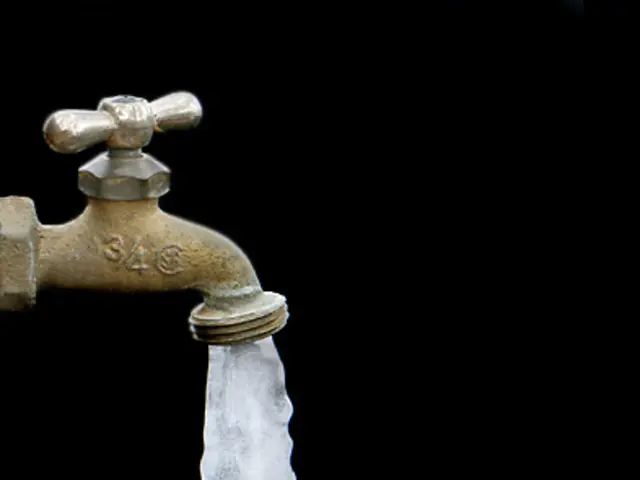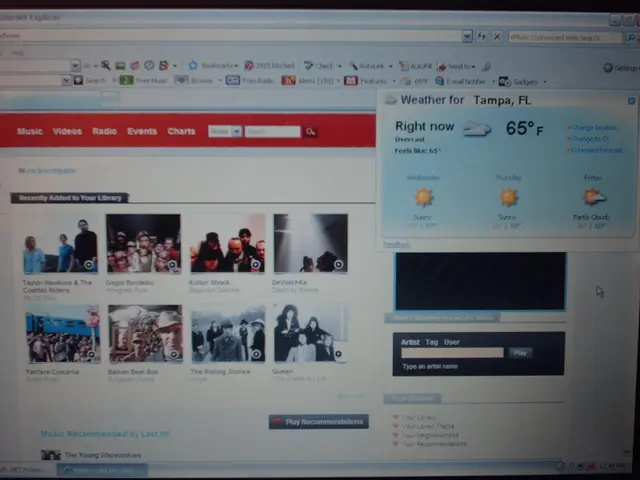Breathed Life and Joy Once Upon a Time
A Blast from the Past: German Public Broadcasting's Golden Era
Stepping back in time, we find ourselves in an era where public broadcasting held a significant role in the lives of Germans. Until the arrival of private television in 1984, led by Chancellor Helmut Kohl (CDU), the Federal Republic of Germany had only three public broadcasting programs: ARD, ZDF, and ad-free regional broadcasts. ARD, introduced in 1950, was followed by ZDF in 1963.
While ZDF transformed into a semi-official advertising channel for the CDU, akin to RTL and SAT.1, ARD remained devoted to its mission of providing not only entertainment but also educating, informing, and enriching its audience. However, sifting through the ARD media library today, it's challenging to distinguish the "Films" section from the cheesy Degeto tear-jerkers, "Schlagerparty - The Best XXXL", regional kitsch, and a heap of trash.
In the 1980s, the world was still somewhat ordered, with television programs catering to the preferences of the "lower middle class." With Dad working and Mom taking care of the household, evening gatherings in front of the screen offered a welcome escape. In the "Tatort", popular TV detectives like Veigl, Haferkamp, Schimanski, and Lena Odenthal investigated crimes, while the first exchange of kisses between two gay series characters occurred in 1990.
ARD also served as an impromptu comedy institute, bringing wit and satire into Germans' living rooms through series like "Ein Herz und eine Seele" and "Fast wia im richtigen Leben". Notable investigative journalism was provided by Klaus Bednarz, editor-in-chief of "Monitor", who reported on the misdeeds of corporations and politicians from 1983 to 2002, never shying away from left-wing criticism.
For those seeking escape from West German reality, children's programming like "Meister Eder and his Pumuckl", "Sesame Street", and "Sendung mit der Maus" offered a breath of fresh air. No one would have thought to refer to this broadcasting institution – the source of these shows, sketches, and series – by its correct name: "Working Group of the Public Broadcasting Institutions of the Federal Republic of Germany" (ARD).
A Rewind to 1980: The Pre-Internet Age
In the 3,000-inhabitant town where many grew up, people left homes to use public telephone booths to make calls. The most modern devices in most households were a color television and a moss-green dial telephone. In the evening, families would gather to watch quiz shows like Robert Lembke's "heiteres Berufsraten", where guests' occupations were guessed based on clues. "What kind of piggy would you like?" Lembke would ask each guest. Such shows ran on ARD from 1955 to 1989.
Behind the Scenes: An Insight into Public Broadcasting in West Germany (1950-1989)
From 1950 to 1989, public broadcasting in West Germany played a crucial role in shaping the country's media landscape and society. Regional and national broadcasters, including ARD and ZDF, provided impartial, high-quality content to the public. The decentralization of public broadcasting allowed for diverse programming reflecting regional interests and cultures.
Public broadcasting significantly influenced political discourse by offering platforms for debates and analyses, contributing to a well-informed public. It helped preserve and promote German culture, offering a wide range of cultural, educational, and entertainment programs, fostering a strong sense of national identity and social cohesion.
West Germany's public broadcasting system was often seen as a model for other countries due to its commitment to quality programming and public service. However, the 1980s brought challenges as private media outlets emerged, forcing reforms to ensure public broadcasting remained relevant and competitive. The introduction of satellite and cable television expanded the reach of public broadcasting, offering more channels and programs to viewers.
Despite the challenges, public broadcasting remained a cornerstone of German media, ensuring a diverse and high-quality service to the public.
- As the world transitioned into the pre-internet era, lifestyle programs on ARD, like the comedic series "Ein Herz und eine Seele" and "Fast wia im richtigen Leben," offered a glimpse of technology limitations through their depiction of West German daily life.
- Throughout the 1980s, entertainment on ARD, such as the children's shows "Meister Eder and his Pumuckl," "Sesame Street," and "Sendung mit der Maus," contrasted sharply with the outdated technology found in homes, marking a distinct divide between modern entertainment and the technological world.








